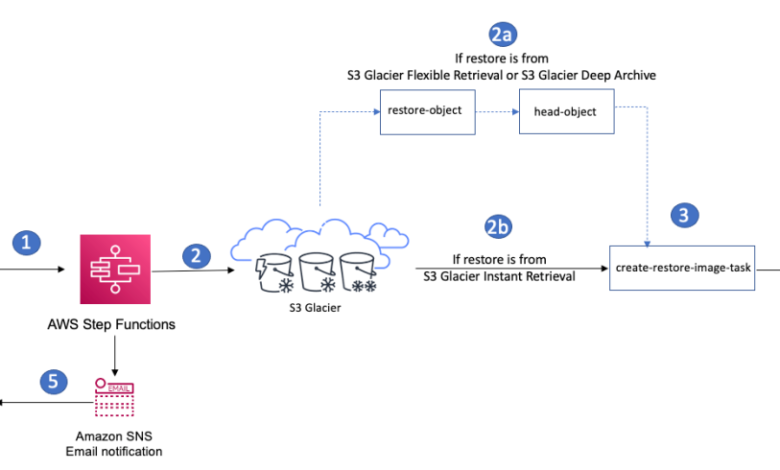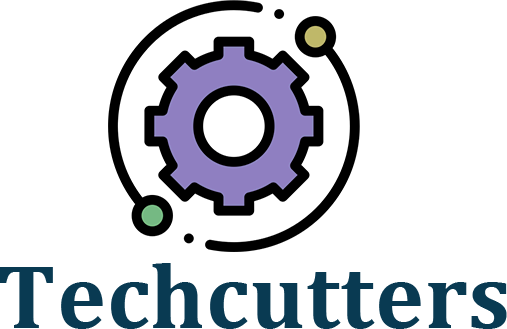AWS Rehydration: Reviving Data from the Depths

In the realm of cloud computing, AWS stands as a towering giant, providing a vast array of services that empower organizations to leverage the full potential of the cloud. Among these services, AWS rehydration has emerged as a crucial process for reviving archived data, making it accessible and usable once more. This article delves into the concept of AWS rehydration, its significance, mechanisms and the role of Komprise in optimizing this process.
Understanding AWS Rehydration
AWS rehydration refers to the process of restoring archived data from cold storage back to a more accessible, active state. In AWS, data can be stored in various tiers, ranging from the highly accessible S3 Standard to the infrequently accessed S3 Glacier and Glacier Deep Archive. While these cold storage options are cost-effective for long-term data retention, retrieving data from them, known as rehydration, is essential when that data is needed for analysis, compliance, or operational purposes.
The concept of rehydration is akin to thawing frozen goods—data that has been stored in a “frozen” state is brought back to a “fresh” state, ready for immediate use. This process is particularly important for businesses that need to access historical data for audits, regulatory compliance, or to gain insights through data analytics.
The Importance of AWS Rehydration
The significance of AWS rehydration lies in its ability to balance cost efficiency with data accessibility. Cold storage options like S3 Glacier are designed for cost-effective long-term storage, but they come with trade-offs in terms of retrieval speed. Rehydration allows organizations to temporarily or permanently move data to more accessible storage classes, ensuring that critical data is available when needed.
- Cost Efficiency and Accessibility: By leveraging AWS rehydration, businesses can take advantage of the low-cost benefits of cold storage while still ensuring that data is accessible for operational needs. This balance helps in optimizing storage costs without compromising on data availability.
- Regulatory Compliance: Many industries are subject to regulations that require the retention and retrieval of data over extended periods. AWS rehydration facilitates compliance by making it easier to access and provide historical data when required by regulatory bodies.
- Data Analytics and Insights: Rehydrated data can be used for various analytical purposes, providing valuable insights that drive business decisions. By bringing archived data back to life, organizations can uncover trends, patterns and opportunities that might have otherwise remained hidden.
Mechanisms of AWS Rehydration
The AWS rehydration process involves several key steps:
- Data Identification: The first step is to identify the data that needs to be rehydrated. This involves analyzing the archived data to determine its relevance and importance for the current requirement.
- Initiating Retrieval: Once the data is identified, the retrieval process is initiated. AWS offers different retrieval options, such as expedited, standard and bulk retrieval, each with varying costs and retrieval times. The choice of retrieval option depends on the urgency and volume of data needed.
- Data Movement: After the data is retrieved, it is moved from the cold storage tier (such as S3 Glacier) to a more accessible tier (such as S3 Standard or S3 Infrequent Access). This step ensures that the data is readily available for use.
- Verification and Usage: Finally, the rehydrated data is verified for integrity and accuracy before being used for its intended purpose, whether it be analysis, reporting or compliance.
The Role of Komprise in AWS Rehydration
Komprise, a leader in intelligent data management, plays a pivotal role in optimizing the AWS rehydration process. Komprise offers a comprehensive data management solution that simplifies the identification, retrieval and management of archived data across various storage tiers.
- Automated Data Identification: Komprise uses advanced analytics to automatically identify data that needs to be rehydrated. By analyzing access patterns, data age and usage trends, Komprise ensures that only the most relevant data is retrieved, reducing unnecessary retrieval costs.
- Efficient Data Retrieval: Komprise integrates seamlessly with AWS, enabling efficient data retrieval from cold storage. With its intuitive interface and automation capabilities, Komprise streamlines the rehydration process, minimizing manual effort and errors.
- Cost Optimization: One of the standout features of Komprise is its ability to optimize storage costs. By intelligently managing data across different storage tiers and automating the rehydration process, Komprise helps organizations achieve significant cost savings while ensuring data accessibility.
- Comprehensive Data Management: Beyond rehydration, Komprise provides end-to-end data management solutions. This includes data migration, archiving and analytics, empowering organizations to manage their data lifecycle effectively and maximize the value of their data assets.
Best Practices for AWS Rehydration
To effectively implement AWS rehydration, organizations should follow these best practices:
Plan Ahead: Develop a clear plan for data rehydration, including identifying the data that might need to be rehydrated in the future and the appropriate retrieval options. This proactive approach helps in minimizing delays and costs associated with urgent data retrievals.
Monitor and Analyze: Continuously monitor data access patterns and storage usage. Use analytics to identify trends and predict future data retrieval needs, ensuring that the rehydration process is always aligned with business requirements.
Leverage Automation: Utilize tools like Komprise to automate the rehydration process. Automation reduces manual intervention, minimizes errors and ensures a seamless data retrieval experience.
Optimize Retrieval Options: Choose the right retrieval options based on the urgency and volume of data needed. AWS offers expedited, standard and bulk retrieval options, each with different costs and retrieval times. Selecting the appropriate option helps in balancing cost and speed.
Ensure Data Security: Implement robust security measures to protect data during the rehydration process. This includes encryption, access controls and monitoring to prevent unauthorized access and ensure data integrity.
Challenges and Considerations
While AWS rehydration offers significant benefits, it also presents challenges:
- Retrieval Costs: Retrieving data from cold storage can be expensive, especially if done frequently or in large volumes. Organizations need to carefully assess the cost implications and plan their rehydration strategy accordingly.
- Retrieval Times: Depending on the retrieval option chosen, the time taken to rehydrate data can vary. Expedited retrievals are fast but costly, while bulk retrievals are economical but slower. Balancing speed and cost is crucial.
- Data Integrity: Ensuring the integrity and accuracy of rehydrated data is critical. Organizations must implement robust verification processes to prevent data corruption and ensure that the retrieved data is usable.
Future Trends in AWS Rehydration
The future of AWS rehydration is influenced by technological advancements and evolving business needs. Key trends include:
- AI and Machine Learning: AI and ML are increasingly being integrated into rehydration processes to enhance data identification and retrieval. These technologies can predict future data needs, optimize retrieval strategies and improve overall efficiency.
- Hybrid Cloud Solutions: As organizations adopt hybrid cloud environments, integrating AWS rehydration with on-premises and other cloud storage solutions becomes essential. Hybrid solutions offer greater flexibility and ensure seamless data management across diverse environments.
- Advanced Data Management Tools: The development of more sophisticated data management tools will further streamline the rehydration process. These tools will offer enhanced automation, analytics and integration capabilities, making data rehydration more efficient and cost-effective.
AWS rehydration is a vital process for organizations that need to balance cost efficiency with data accessibility. By leveraging tools like Komprise and following best practices, businesses can optimize their rehydration strategies, ensuring that archived data is readily available when needed. As technology continues to evolve, AWS rehydration will remain a critical component of effective data management, enabling organizations to unlock the full potential of their data assets.




